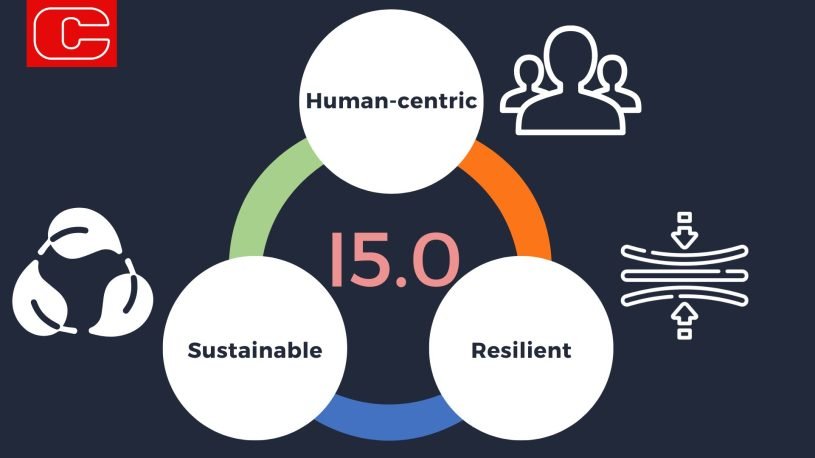Industry 5.0 is a term introduced in 2015 but only came into real use among companies and the media after the European Commission a document entitled “Industry 5.0: towards a sustainable, human-centric and resilient European industry” in January 2021.
If industry 4.0 is aimed at digitizing processes by introducing innovative technologies such as robots, artificial intelligence, IOT, digital twin, and much more, industry 5.0 considers cooperation between machines and humans.
A new vision, an industry focused not only on efficiency and productivity but also committed to strengthening its role and contribution to society.

It is based on a production model characterized by a human-centric, sustainable and resilient approach.
Human centered manufacturing
The human-centric approach puts technology at the service of man, making workplaces more inclusive and safer for workers, respecting privacy, autonomy and human dignity.
It represents the perfect collaboration between man and machine.
Resilience
The past few years have been complicated. Think about the pandemic and the geopolitical changes that have generated instability and limited visibility in the short term.
Here we introduce an important concept: Resilience.
In recent years these changes have shown how fragile Industries can be. By guaranteeing resilience, they can withstand adversity and cope with unpredictable changes in the market, demonstrating international competitiveness.
Green deal
The European Commission has set itself the goal of reaching 55% carbon emissions reduction by 2030, asking companies to adopt models based on the circular economy for their business.
Unfortunately, the actual economic system our society is based on is linear, meaning that raw materials are extracted and used for production, thus obtaining finished products which will likely become waste at the end of its life.
This is why it is important to develop circular processes that reuse and recycle natural resources, reduce waste and minimize environmental impact.
Industry 5.0 is a recognition of how technology must not be an end in itself but must be at the service of man and the society he belongs to, so that a perfect, complementary combination can be created between people and manufacturing machines.
